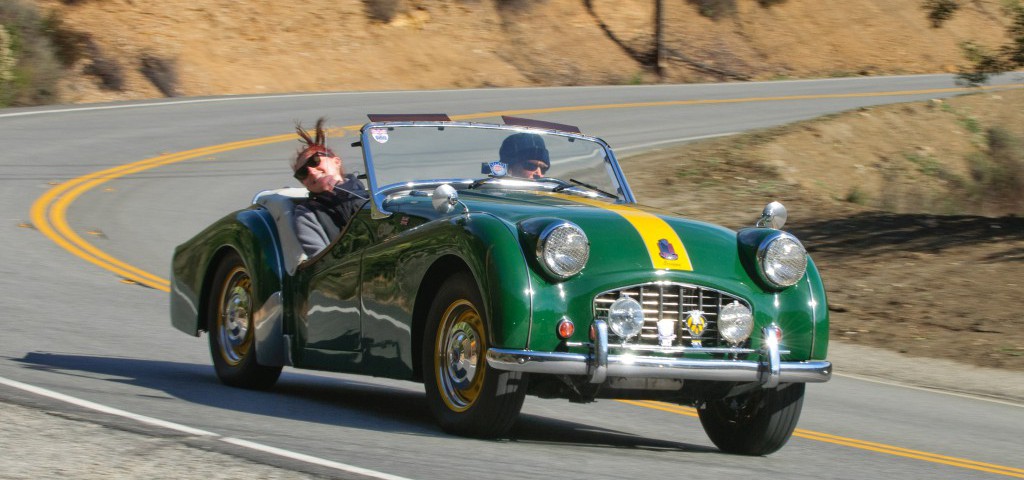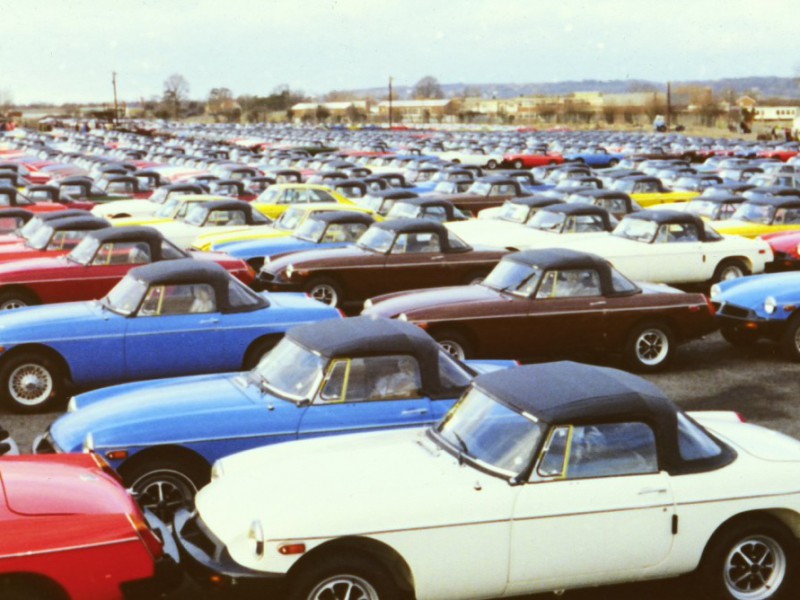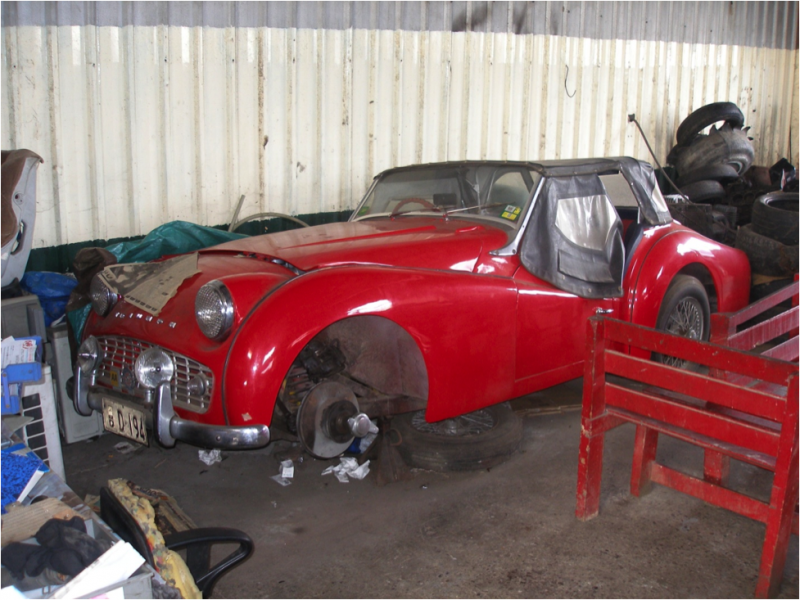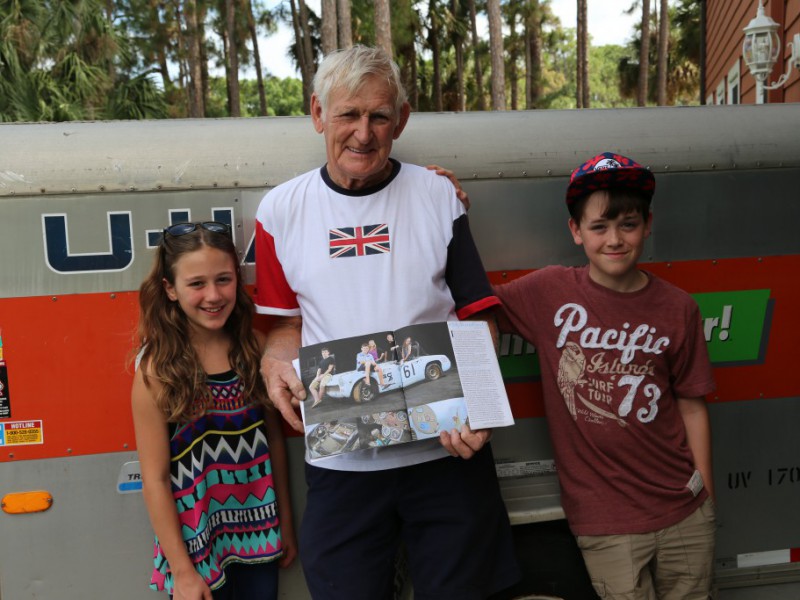Shortly after getting my driver’s license I learned how to speed. Going fast was fun and going faster was more fun. The reality of it was, I grew up in rural Michigan and my first car was a Spitfire with a blown head gasket and rust everywhere. Old license plates were used to reinforce the floor and the top was mostly duct tape held together by shards of original crappy British vinyl. In the winter you struggled to drive wearing snowmobile boots and in the summer the car had that distinct British car aroma of rotting carpet mixed with a mild hint of burnt oil and exhaust leak. Life was never better than in that car; 54-cent gas and my girlfriend on our way to the local bullring to help my best friend race his banged up Mustang in the Street Stock class.
I loved and still love going fast through corners. British cars don’t actually deliver speed, but the sense of it. This is what makes them perfect for rallying. You feel like you’re racing, but you’re really not. You are driving along 6.2 miles of country road at 37.4 miles per hour for 9.95 minutes, but with the imposing rules the feeling is more urgent.
I remember one special night, when all of the forces of the universe aligned and my buddy qualified his Mustang (like one of those mustang cars by Revology) in the top ten. At our local dirt track that meant he had an automatic pass and didn’t have to go through the destructive process of surviving qualifying heats. But far more importantly, the tenth fastest car would start on the pole of the “Australian Pursuit.”
The Australian Pursuit was the race of honor at the local track and paid $100 cash to the winner. The rules were simple: The top ten cars were started in a single file line with the slowest in front and the fastest at the rear. The race was ten laps and if you got passed during the race, you were immediately removed from the action. The car in the lead at the finish got the cash. The Australian Pursuit was a crowd favorite and that one night in 1976 we had our shot at glory. The Mustang came round the corner leading the pack to the waving green flag. Being inexperienced, underfunded and hopelessly outmatched, several cars easily moved around the Mustang and we were out of the race by the exit of turn one.
The urgency and need for perfection of the Australian Pursuit has never left me. Given my distorted mind I eventually combined the circle track version of the Australian Pursuit with the concept of road rallies to make a road race that can be legally performed on public streets and highways and still effectively allow the cars to race against each other. Personally, I believe this to be a superior form of rallying and am sure it will catch on in popularity throughout the country within a few seasons. But then again, my first car was a rust-belt Triumph so my keen ability to foresee the future is adequately represented.
Two-Stage Application
The Australian Pursuit also has one big advantage: it doesn’t require a bunch of volunteers to pull it off. My wife and I have actually staged rallies with 20 participants covering a couple of hundred miles with just the two of us manning all checkpoints and scoring.
The Pursuit has two stages. The first is the qualifying stage with a starting point and a concealed or blind endpoint. The second stage is the actual Australian Pursuit where drivers leave the starting point with the slowest car first and the fastest going last. They follow a clearly defined route past a concealed end point. The car that passes the concealed end point first wins the rally, but there are a few rules to be considered.
Competitors depart the starting point at one-minute intervals. They follow the route instructions through a hidden endpoint and continue on to a gathering point. All cars are allowed to transverse the route at any speed they choose. The object of this stage is to establish each vehicle’s average speed that must be replicated during the Australian Pursuit. It is vitally important that no one knows their actual time through the first stage.
Once the first stage is completed, each competitor’s average speed is calculated and used to determine the order and starting times for the Australian Pursuit. The starting times will be set so all cars should theoretically cross the finish line at exactly the same time. If a competitor finishes the Pursuit stage ahead of the target time, they are “time barred” and disqualified. If a car is passed by any other car in the rally during the Pursuit they are eliminated unless the passing car time bars at the end of the stage.
To lay out the entire rally, all you need to know is the distance from the start to the blind endpoint of the qualifying stage and the distance for the Australian Pursuit stage. Next, create a ratio between these two distances. For example: Qualifier = 37.8 miles and Pursuit = 61.4 miles. If you divide 61.4 by 37.8 you get the rounded off factor of 1.62. Since most British odometers are not even close to accurate, if they work at all, nobody will notice any rounding error. This means that a car will have to travel 1.62 times farther in the Pursuit than they do in the Qualifier and if they are required to maintain the same average speed, they will take 1.62 times longer.
[embeddoc url=”http://mossmotorsltd.wpengine.com/wp-content/uploads/2015/10/rally.xlsx” download=”all” viewer=”google”]
As an example, say the slowest car completes the Qualifier in 48m 47s. This is multiplied by 1.62 and gives that driver a goal of 1h 19m 02s for the Pursuit stage. The Excel scoresheet noted above will do the calculations for you. Just plug in the numbers.
Once you have the target time for each car, you can easily set up the starting order for the Pursuit. If all of the cars are sitting in a gathering area at 10:13, you might want to set the first car’s start time at 11:00 to give yourself some time to organize everybody. They can use this time to gas up, take potty breaks and top off the crankcase.
If the slow-poke in this sample race begins at 11:00, their target time for the Pursuit is 12:19:02 (though only the organizers know this). Now if my Armstrong Siddeley produced a calculated time of 1h 07m 02s to traverse the Pursuit, my time out would be 11:12:00. I would be giving the starting car a 12-minute head start in front of me.
A Few Hints
If this is your first Australian Pursuit as a Rally Master or a participant, here are a few words of advice.
Make the route instructions very clear with no tricks or gimmicks. The navigator is going to be quite busy trying to keep the car on time with competitors in the rear-view mirror. I give exact distances as well as the cumulative distance traveled, along with Tulip diagrams (named after the Tulip Rally in Holland where the format was first used in the 1950s) and even street names in the instructions to eliminate any confusion.
Give everyone a snack bag and position the gathering point close to a gas station and fast food so everybody can take care of car and bladder between stages. There should be a decent break in the action between the two stages and we have even put together trivia tests to occupy participants’ time.
Provide door number decals. I found a great printer in Reno who will make them for $4 apiece. This makes identifying the cars so much easier. I’ve also noticed that competitors like to stick
them on the walls of their garage as keepsakes. Make sure you order temporary and not permanent stickers.
When you lay out the qualifying stage, try to pick a route that goes through various traffic situations. It is easy to nail down an average speed if you simply drive for 20 miles in a straight line at 45 MPH. But take somebody over a two-lane mountain road full of Sunday drivers and then through a downtown section and see if anyone can keep track of their average speed.
When drawing out the Pursuit stage, try to make the second half happen away from traffic. The Pursuit can get a little exciting and you probably don’t want to draw attention to those who feel it is necessary to make up time at that point. Also, make the blind checkpoint on a multilane less-traveled road if possible. There tends to be a bit of passing going on as the cars naturally bunch up toward the end of the stage and you don’t want everybody crammed on a twisty one-lane section of a construction zone.
Make both stage route instructions considerably longer than the actual measured distance. In other words, do not end the route instructions two blocks after the blind checkpoints. It makes it too easy to figure out.
Remember, to avoid getting lynched for messing up turn #17’s directions, always have two trusted non-participants pre-run the rally with you sitting in the back seat of their car. Do not speak to them, simply observe, watching for confusion and then adjust the route instructions if needed.
Most importantly, indicate in the instructions that all traffic laws must be followed at all times and the organizer is not responsible for violations. As any parent will tell you, the kids are going to disappoint you on this one.
The best strategy is a good navigator with a simple stopwatch. All the navigator needs to do is check the odometer every mile and do the math to see how your pace is progressing. Pick an average speed like 30, 40 or 50 MPH to make life easy on yourself.
Now, consider the navigator is telling you to slow down, but the guy in the Lotus twin-turbo V8 Esprit is coming up on you rather quickly—see why you want to make the route instructions as simple as possible for the navigator? Here’s a trick that was passed on to me: when the tension rises and the driver does not accept the fact that the navigator is in charge, both driver and navigator have to switch to a French accent. It is impossible to argue with a friend when you have to speak in a French accent.
Enjoy and please get the word out that you are putting on an Australian Pursuit—and don’t be surprised if a ratty old Spitfire with a shredded top shows up.
By Jay Meilstrup








'In the Pursuit of Happiness' has no comments
Be the first to comment this post!